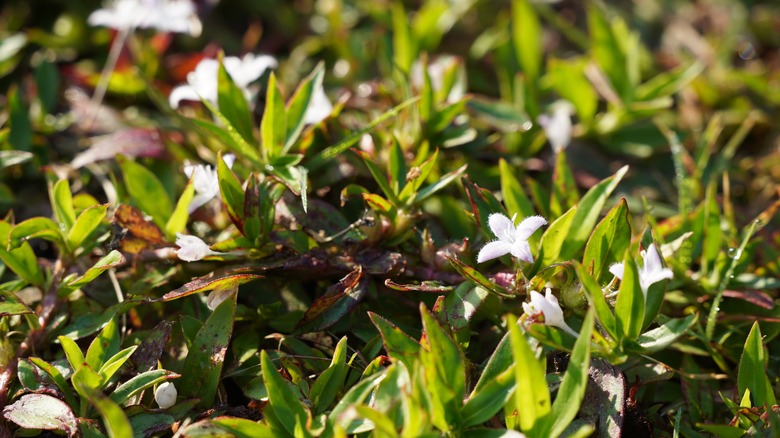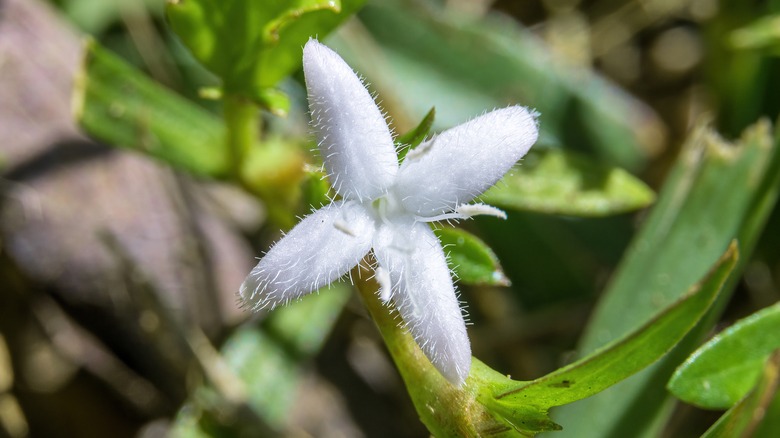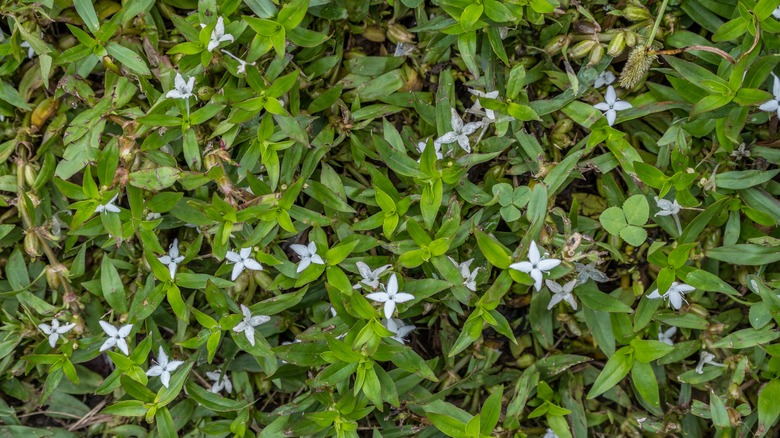What Causes Virginia Buttonweed To Grow And Spread And How To Spot It
We may receive a commission on purchases made from links.
Virginia buttonweed (Diodia virginian), a perennial, broadleaf weed, is one of those sneaky weeds that wreak havoc on your lawn. This perennial weed can quickly take over your lawn and garden, forming thick mats that choke out desirable plants and make your yard look less appealing. Virginia buttonweed is known for its resilience, thriving in moist conditions. It often appears in lawns with poor drainage or overly wet soil. The reasons for its invasion typically lie in a combination of environmental factors — like excess moisture — and a lack of competition from other plants, which allows it to flourish.
While its low-growing nature may make it easy to overlook at first, this weed can be quite the headache once it establishes itself. Identifying it early is essential for effective management. Keep an eye out for its characteristic growth habit. When you see low patches with a dense mat of green leaves that seem resistant to the usual removal methods, you may have buttonweed on your hands. You'll likely spot its broad, glossy leaves and clusters of tiny white flowers, but if you want to understand how to tackle this troublesome weed truly, let's go a bit deeper into identifying its features.
How to identify Virginia buttonweed
Virginia buttonweed is relatively straightforward to identify once you know what to look for. The leaves are dark green, smooth, and waxy, growing in pairs along the stem. They are typically oval-shaped and about 2 to 4 inches long, often featuring a slightly serrated edge. One of its distinguishing characteristics that sets it apart from many other weeds is the arrangement of the leaves in pairs.
The growth habit of Virginia buttonweed is another key feature. Unlike many weeds that grow upright, this plant spreads horizontally, forming a dense mat that can root at the nodes. Similar to other creeping lawn weeds, this is why it often appears in clusters, making it particularly difficult to deal with in lawns. You can expect to see its tiny white flowers blooming during the growing season, which lasts from late spring to early fall. Each flower has four petals and typically grows in clusters, although they can be easy to miss if you're not looking closely.
Additionally, after the flowering stage, Virginia buttonweed produces small, round seed capsules. These capsules drop seeds into the surrounding soil, facilitating its spread and making it essential to manage if it's already taken root in your yard. Virginia buttonweed thrives in areas with poor drainage, so you'll likely find it in low-lying spots, near water sources, or lawns that hold moisture longer than average.
Controlling and preventing Virginia Buttonweed
So, once you've identified Virginia buttonweed, what can you do about it? Prevention and control strategies can be quite effective, but you need to be thorough. Improving drainage in your yard is the key to preventing Virginia buttonweed from taking hold. Aerating your lawn can help reduce soil compaction and promote better drainage. Additionally, maintaining a healthy lawn through proper fertilization and mowing practices can make it less hospitable for this invasive weed.
If you catch Virginia buttonweed early, manual removal can be effective. You'll need to remove the entire root system to prevent regrowth. It's best to do this after a rain when the soil is soft, making it easier to pull the roots out. For more stubborn infestations, herbicides may be necessary. Pre-emergent herbicides, like Quali-Pro MSM Turf Herbicide, help prevent seeds from germinating, while post-emergent options can target existing plants. Be sure to read the labels carefully and follow all safety precautions when using chemical treatments.
Applying a thick layer of mulch in your flower beds can help smother any existing Virginia buttonweed and prevent new growth. Mulch also helps retain moisture and suppress other weeds, making it a win-win for your garden. Recognizing Virginia buttonweed early and taking proactive measures can help keep it at bay. By understanding its characteristics and implementing effective control strategies, you can maintain a healthy, thriving yard free from this persistent weed.


